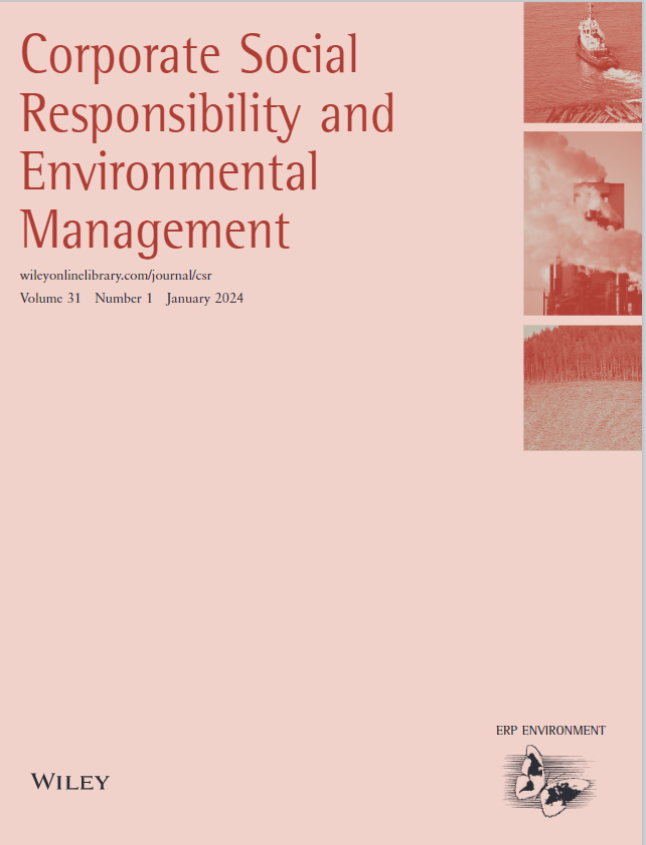机构投资者的地域集中度与环境、社会和治理绩效:倒 U 型关系
IF 8.3
2区 管理学
Q1 BUSINESS
Corporate Social Responsibility and Environmental Management
Pub Date : 2024-07-22
DOI:10.1002/csr.2915
引用次数: 0
摘要
尽管互联网的飞速发展无限缩短了经济主体之间的距离,但地理距离仍然是影响经济主体之间信息获取和人际互动的重要因素。利用 2009 年至 2020 年中国 A 股上市公司的数据,我们探讨了机构投资者的地理集中度与环境、社会和治理(ESG)绩效之间的关系。研究结果表明,投资者的地域集中度对环境、社会和治理(ESG)绩效的影响呈倒 "U "型,而高速铁路和制度环境削弱了机构股东地域集中度的负面影响,使倒 "U "型关系更加平缓。随着高速铁路和制度环境进一步拉平曲线,倒 U 型关系最终将变为 U 型,出现 "形状翻转"。我们的研究为企业环境、社会和治理绩效的影响因素提供了新的视角,丰富了机构投资者的特征,对提高企业环境、社会和治理绩效具有现实意义。本文章由计算机程序翻译,如有差异,请以英文原文为准。
Institutional investors' geographic concentration and environmental, social, and governance performance: An inverted U‐shaped relationship
Although the rapid development of the Internet has infinitely shortened the distance between economic agents, geographic distance is still an important factor affecting information acquisition and interpersonal interactions between them. Using data on Chinese A‐share listed companies from 2009 to 2020, we explore the relationship between geographic concentration of institutional investors and environmental, social, and governance (ESG) performance. Our findings indicate that investors' geographic concentration has an inverted U‐shaped influence on ESG performance, and high‐speed railway and institutional environment weaken the negative influence of geographic concentration of institutional shareholders, leading to a flatter inverted U‐shaped relationship. As high‐speed railway and institutional environment further flatten the curve, the inverted U‐shaped relationship will eventually become U‐shaped, and a “shape‐flip” occurs. Our research offers a new perspective on the factors impacting corporate ESG performance, enriching institutional investor characteristics, and having practical significance for improving ESG performance.
求助全文
通过发布文献求助,成功后即可免费获取论文全文。
去求助
来源期刊
CiteScore
17.20
自引率
16.30%
发文量
189
期刊介绍:
Corporate Social Responsibility and Environmental Management is a journal that publishes both theoretical and practical contributions related to the social and environmental responsibilities of businesses in the context of sustainable development. It covers a wide range of topics, including tools and practices associated with these responsibilities, case studies, and cross-country surveys of best practices. The journal aims to help organizations improve their performance and accountability in these areas.
The main focus of the journal is on research and practical advice for the development and assessment of social responsibility and environmental tools. It also features practical case studies and evaluates the strengths and weaknesses of different approaches to sustainability. The journal encourages the discussion and debate of sustainability issues and closely monitors the demands of various stakeholder groups. Corporate Social Responsibility and Environmental Management is a refereed journal, meaning that all contributions undergo a rigorous review process. It seeks high-quality contributions that appeal to a diverse audience from various disciplines.

 求助内容:
求助内容: 应助结果提醒方式:
应助结果提醒方式:


